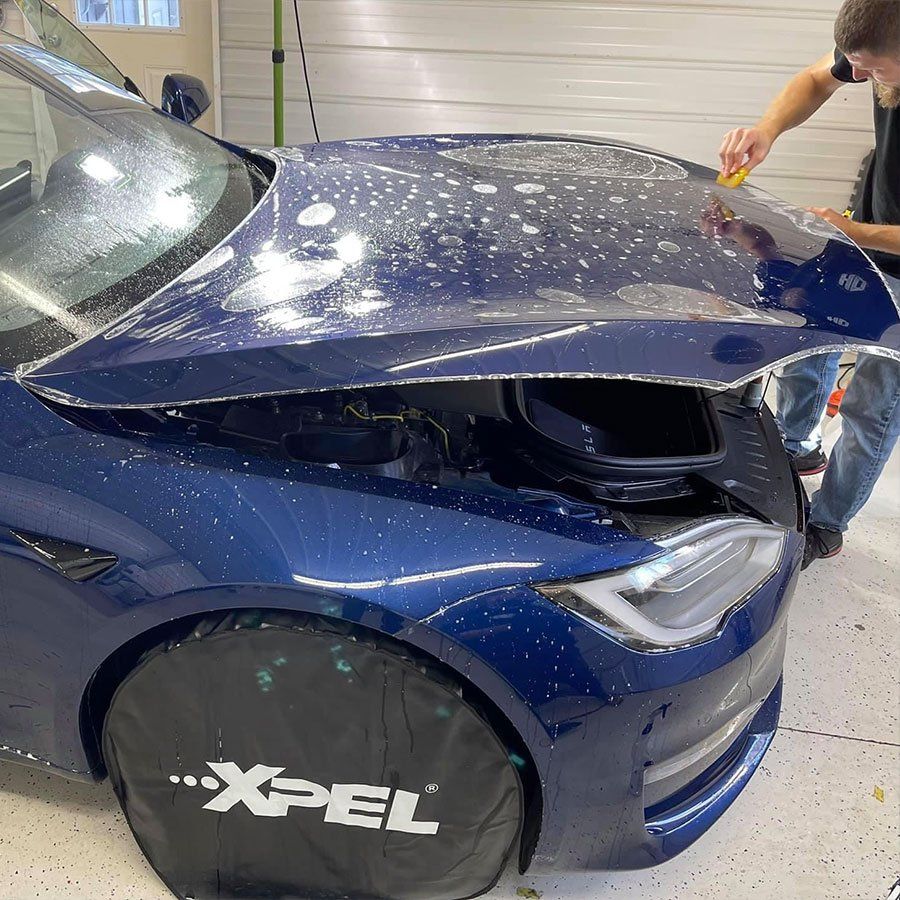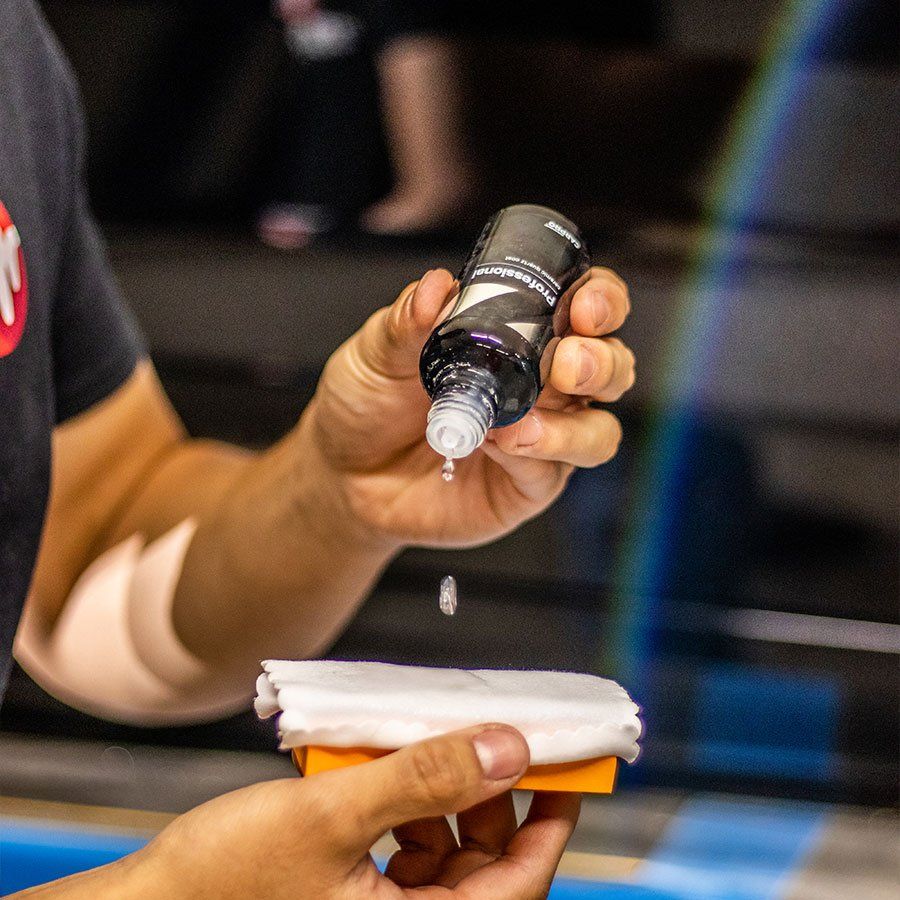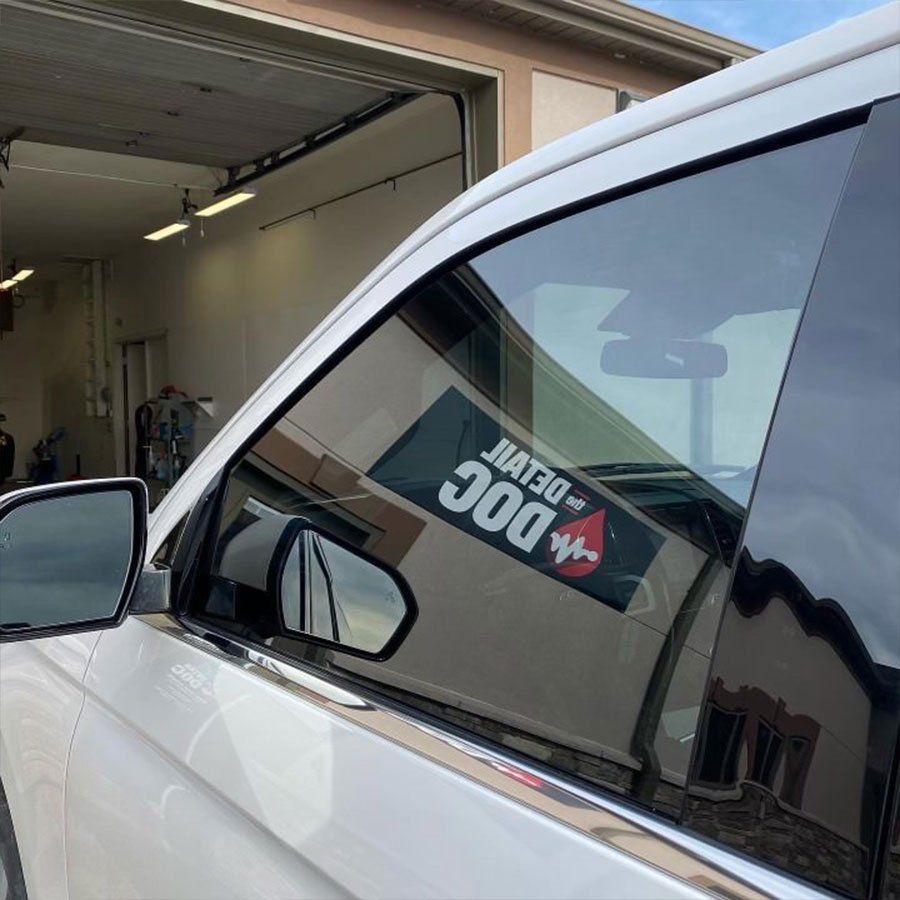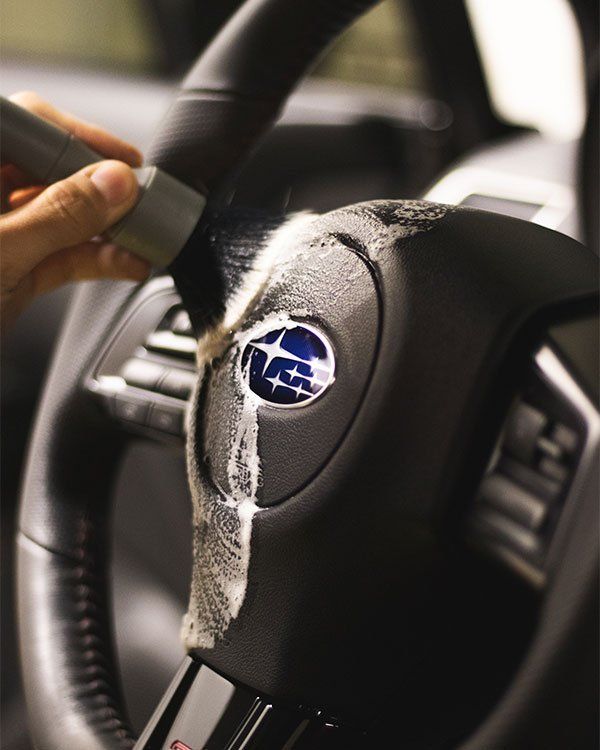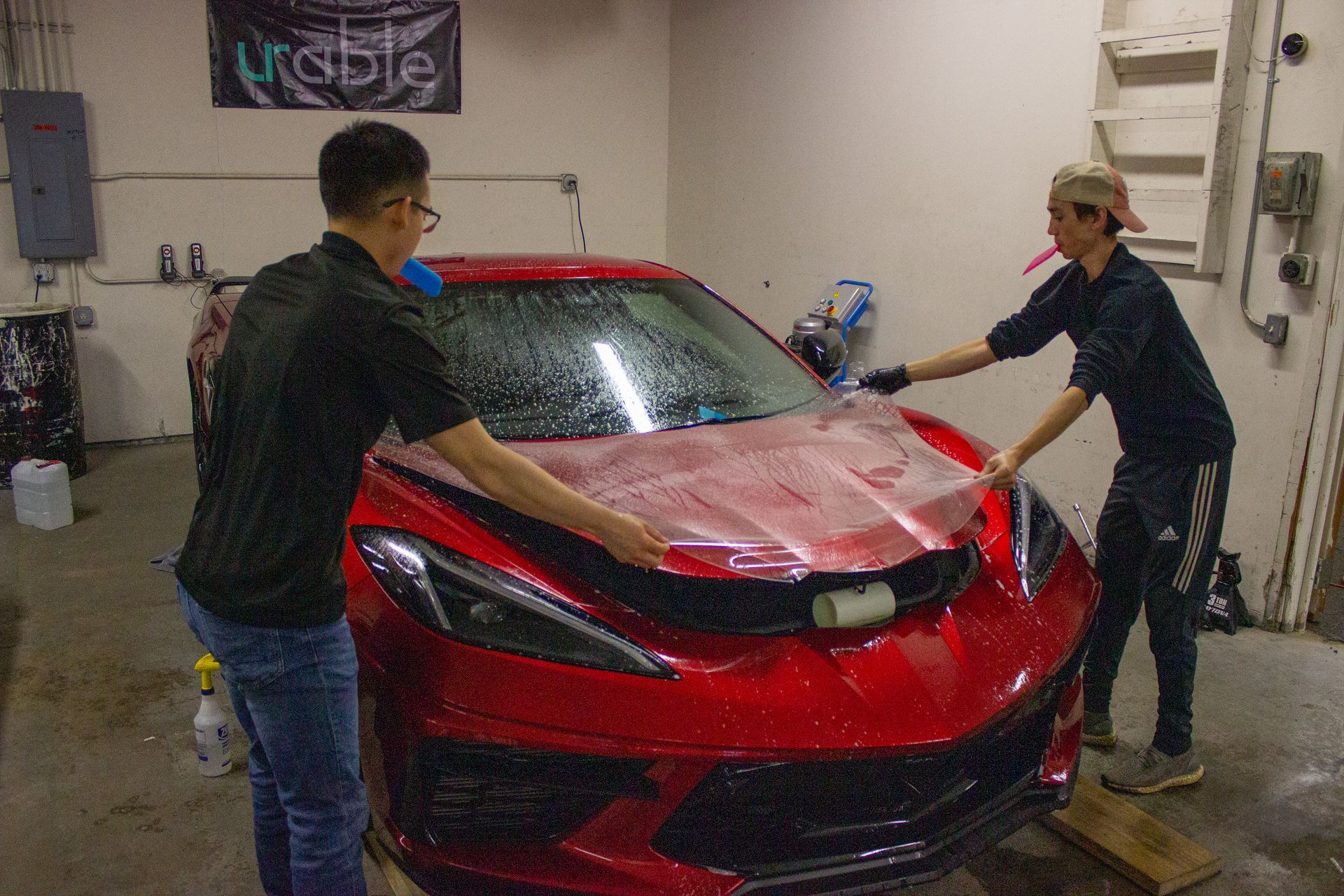The Detail Doc Blog
The Ultimate Guide to Cleaning Paint Protection Film: Step-by-Step Instructions
(989) 244-0505 GET SCHEDULED NOWPaint Protection Film (PPF) can be an incredible asset in keeping your vehicle in top condition, protecting it against scratches, chips, and other forms of damage. However, for optimal use and to ensure its protective qualities remain effective as well as its glossy appearance, regular maintenance is required. In this ultimate guide, we'll walk through step-by-step instructions on how to keep PPF looking its best! Whether you're an enthusiast or simply interested in keeping the exterior in top shape, this guide has everything you need for optimal care of PPF. Let's dive right in and learn how best to maintain and clean paint protection film!
Preparing Your Supplies
Before delving into the meticulous task of cleaning your paint protection film, it's crucial to have the right tools and materials at your disposal. These will not only help you achieve a thorough cleaning but also ensure that the film remains in top condition without sustaining any damage.
Essential Cleaning Tools
Microfiber wash mitt/cloth: Gently remove dirt and grime without causing scratches on the film's surface
Bucket: Mix cleaning solution and rinse your cleaning tools
Soft-bristle detailing brush: Tackle stubborn spots or debris without harming the film
Squeegee: Remove excess water and cleaning solution from the film, leaving it dry and streak-free
Using a microfiber wash mitt or cloth is especially important because it's gentle on the film and prevents scratches, which is crucial for maintaining the integrity of the paint protection film.

Cleaning Solutions
When selecting a cleaning solution, opt for a pH-neutral car wash soap. Avoid using products containing harsh chemicals like Naphtha or petroleum distillates, as these can potentially damage the film's protective properties.
At The Detail Doc, we recommend professional-grade car wash solutions that are safe for the film and the environment. These products retain the quality of the paint protection film while being gentle on its surface. Choosing high-quality cleaning solutions ensures that your film stays in optimal condition throughout its lifespan.
Water Source
It's vital to have access to clean water, whether from a hose or buckets, to thoroughly rinse off the cleaning agents. If your local water is hard, use distilled water to prevent water spots from forming on the film after cleaning. This step further ensures that your paint protection film maintains its pristine appearance without any unsightly water marks.
By preparing these supplies ahead of time, you're setting yourself up for success when it comes to cleaning your paint protection film. The right tools and solutions will not only help you achieve a spotless finish but also prolong the life of the protective film, ensuring lasting durability and enhanced aesthetic appeal for your vehicle.
Applying Cleaning Solutions
Now that your car is all rinsed and ready for a good clean, it's essential to prepare the right soap mixture. Before you start, let's ensure that we choose a pH-neutral car wash soap as it is gentle on the paint protection film and won't degrade the protective coating.
The last thing you want is to undo all the benefits of paint protection film by using harsh chemicals that can diminish its protective properties. So, follow the instructions on the car wash soap bottle for the correct ratio. This will ensure that you're not using too much soap, which can leave residue, and not too little, which might compromise the cleaning power.
Now, once you have your soap mixture prepared, it's time to soak your microfiber wash mitt or cloth in the soapy water. You want to be sure that the wash mitt is fully saturated so that it provides optimal coverage without scratching or damaging the film.
Soaking ensures that the mitt can glide smoothly over the surface, lifting off any grime and dirt effortlessly without creating friction.
Effective Cleaning Techniques
When it comes to cleaning your paint protection film (PPF), being gentle and methodical is key. It's important to use the right tools and techniques to ensure that the film is cleaned effectively without causing any damage. Let's dive into some techniques that will help you maintain the integrity and appearance of your PPF.
Step I - Gentle Washing
Using a soaked microfiber wash mitt, start by gently washing the film in straight, overlapping lines. This ensures thorough cleaning without causing any damage. It's important to avoid circular motions, which can create swirl marks that are difficult to remove. Starting from the top of the vehicle and working your way down will prevent any dirt or grime from running down onto areas you've already cleaned.
This step is crucial because using improper techniques can result in micro-scratches on the PPF, affecting its clarity and overall appearance. Think of it like tenderly wiping a delicate surface. Ensuring a smooth, linear motion while washing guarantees a clean film without any undesirable markings or scratches.
Step II - Spot Cleaning
For areas that are tough to reach or have intricate details, a soft-bristle detailing brush dipped in the soapy solution can be used for spot cleaning. Gently scrubbing these areas is crucial to ensuring thorough cleaning without damaging the film. It's important to use a soft-bristle brush to prevent any potential scratching, but it's also effective enough to remove dirt or grime from hard-to-reach places.
Remember, every inch matters! Some areas of a vehicle with PPF can be challenging to reach, like the nooks and crannies around emblems and trim. Taking special care when cleaning these intricate areas maintains the cleanliness of your PPF without risking damage. This step ensures that even the most detailed parts of your vehicle are kept clean and protected.
These meticulous cleaning techniques go a long way in preserving and enhancing the longevity of your PPF, ensuring that it remains in top-notch condition for years to come.

Tackling Stubborn Dirt
When it comes to keeping your paint protection film (PPF) clean, you might encounter really tough spots that don't come off easily, like bug splatter or tar that have bonded with the film. These stubborn contaminants can be a real pain to deal with but fear not, I've got you covered.
Step I - Targeted Cleaning
When faced with challenging spots like bug splatter or tar, it's time to bring out the big guns: a clay bar lubricated with a soap solution. This powerful tool is designed to gently remove the most stubborn contaminants without damaging the film. Here are some tips for using a clay bar effectively:
- First, lubricate the surface of the PPF with a soapy solution.
- Then, gently glide the clay bar across the affected area. Be sure not to apply too much pressure to avoid causing any harm to the film.
- The clay bar works by picking up and pulling away the contaminants from the surface of the film.
This method ensures that even deeply embedded grime and residue are lifted off without harming the film itself.
Step II - Specialized Products
For persistent stains and contaminants that just won't budge, it might be time to call in specialized cleaning products formulated especially for PPF. Look for products specifically labeled as safe for paint protection film. These solutions are engineered to break down tough grime without causing any harm to the PPF.
Using these PPF-safe cleaning products reduces the risk of inadvertently damaging the film while effectively removing stubborn stains and contaminants. They work by targeting the specific components that make up the tough grime, allowing for safe and thorough cleaning without compromising the integrity of the protective film.
Remember that when dealing with stubborn dirt on your PPF, patience and care are key. Rushing through this process or using harsh chemicals can potentially damage the protective properties of your film. By following these steps and using specialized products, you can effectively tackle even the most tenacious dirt without risking harm to your valuable paint protection film.
Proper Drying Methods
When it comes to cleaning and maintaining paint protection film (PPF), proper drying is just as important as washing. After all, the last thing you want after meticulously cleaning your PPF is water spots or scratches ruining its appearance. Let's break down the steps for ensuring your PPF dries properly without any adverse effects.
Step I - Initial Drying
Once you've rinsed off all the soap, it's time to dry the surface. Use a clean, dry microfiber towel and lightly pat the surface dry. Remember, the key here is not to rub the towel over the film, as that could lead to scratches.
Remember, when you're drying, be gentle but thorough. Make sure to get into corners and edges where water droplets might hide. And don't forget about the bottom part of the vehicle that tends to collect water, especially after a wash.
Step II - Spot Drying
In some cases, there might be hard-to-reach areas that are difficult to fully dry with just a towel. To address this, use compressed air or even a leaf blower to remove excess water. The goal here is to ensure that no moisture is trapped, which could lead to unsightly water spots.
Whether you’re using compressed air or a leaf blower, ensure that it’s set on a low and gentle setting. You don’t want to blow air to cause any damage to the PPF.
These proper drying methods help safeguard the integrity and appearance of your paint protection film by preventing scratches and water spots. Following these steps ensures that your efforts to clean the PPF aren't compromised by improper drying techniques.
Long-Term Maintenance Tips
After investing in paint protection film, establishing a regular cleaning schedule is essential to keeping it in optimal condition. Bi-weekly washes are crucial for preventing the accumulation of dirt and grime, which can compromise the appearance and functionality of the protective film. Maintaining a consistent cleaning routine effectively preserves the integrity of the film, ensuring its longevity and performance.
Consistency is key when maintaining the quality of your paint protection film. Regular washing not only removes surface contaminants but also prevents them from bonding with the film over time. This proactive approach minimizes the risk of stubborn stains and enhances the overall durability of the protective layer.
Incorporating these maintenance practices into your vehicle care routine will not only enhance the longevity of your paint protection film but also contribute to sustaining its flawless appearance for years to come.
To ensure the best care for your vehicle, feel free to contact us for any tips. Schedule an appointment to set up a PPF installation service. We are here to help you keep your car looking its best!

